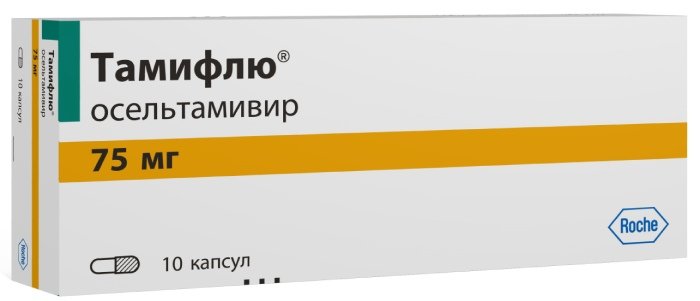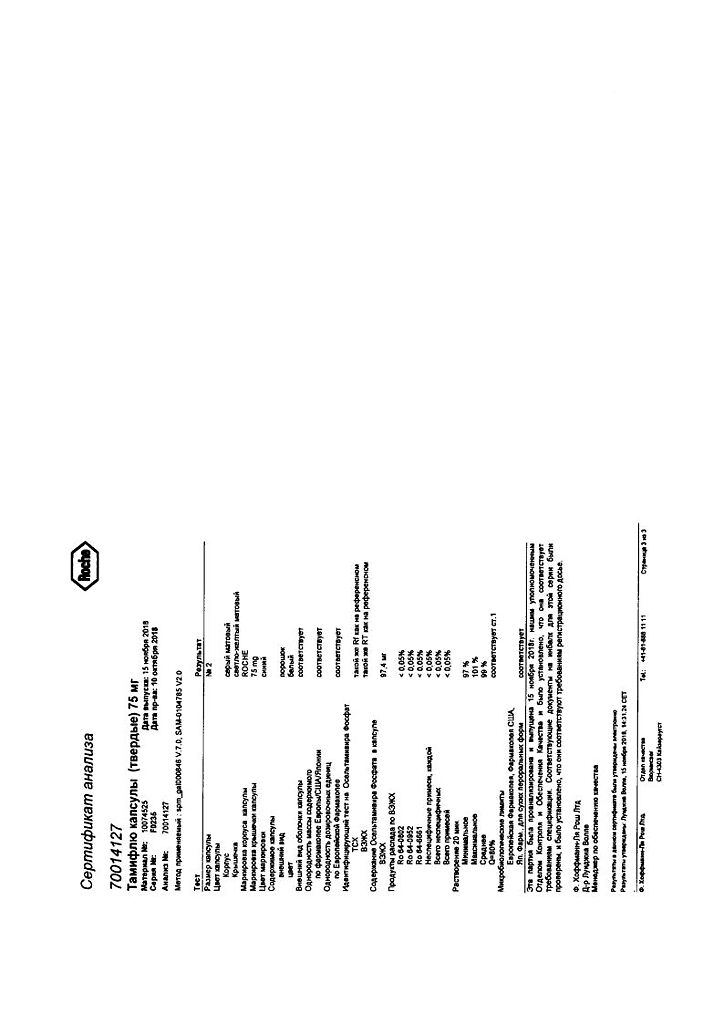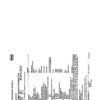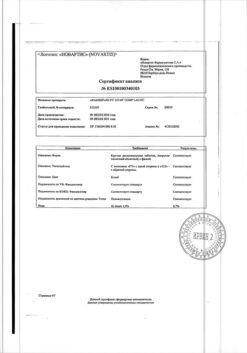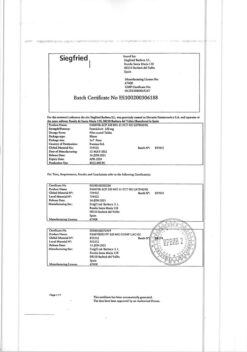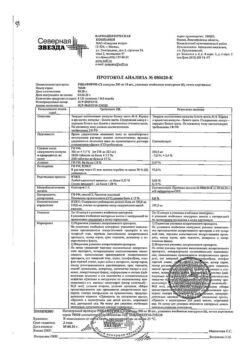No products in the cart.
Description
Pharmgroup:
an antiviral agent.
Pharmic action:
Mechanism of action
The antiviral drug. Oseltamivir phosphate is a prodrug, its active metabolite (oseltamivir carboxylate, OC) is an effective and selective inhibitor of influenza virus neuraminidase type A and B – the enzyme which catalyzes the release of newly formed virus particles from infected cells, their penetration into respiratory epithelial cells and further spread of the virus in the body.
Inhibits influenza virus growth in vitro and suppresses viral replication and pathogenicity in vivo, reduces release of influenza A and B viruses from the body. Studies of clinical influenza virus isolates have shown that the concentration of OC needed to inhibit neuraminidase by 50% (IC50) is 0.1-1.3 nM for influenza A virus and 2.6 nM for influenza B virus. According to published studies, the median IC50 value for influenza B is slightly higher at 8.5 nM. </Clinical efficacy
The clinical efficacy of Tamiflu® has been demonstrated in experimental influenza studies in humans and in phase III studies on influenza infection that occurred in vivo. In conducted studies Tamiflu® had no effect on influenza antibody formation, including antibody production in response to administration of inactivated influenza vaccine.
Natural influenza infection studies
In phase III clinical trials conducted in the Northern Hemisphere in 1997-1998 during seasonal influenza infection, patients were started on Tamiflu® no later than 40 h after the first symptoms of influenza infection appeared. 97% of patients were infected with influenza A virus and 3% of patients were infected with influenza B virus. Tamiflu® significantly shortened the period of clinical manifestations of influenza infection (by 32 hours). In patients with a confirmed diagnosis of influenza who took Tamiflu®, the severity of illness, expressed as the area under the curve for the total index of symptoms, was 38% less compared to patients who received placebo. Moreover, in young patients without comorbidities, Tamiflu® reduced by approximately 50% the incidence of flu complications requiring antibiotics (bronchitis, pneumonia, sinusitis, otitis media). In these phase III clinical trials, there was clear evidence of efficacy of the drug with respect to secondary efficacy criteria relating to antiviral activity: Tamiflu® caused both a shortening of the time of virus release from the body and a reduction in the area under the “viral titers-time” curve.
The data obtained in a study of Tamiflu® therapy in elderly and senile patients show that Tamiflu® administration at a dose of 75 mg twice daily for 5 days was accompanied by clinically significant reduction in the median period of clinical manifestations of influenza infection, similar to that in adult patients of younger age, but differences did not reach statistical significance. In another study, influenza patients over 13 years of age who had concomitant chronic diseases of the cardiovascular and/or respiratory systems received Tamiflu® in the same dosing regimen or placebo. There were no differences in the median period before clinical manifestations of influenza infection between the Tamiflu® and placebo groups, but the period of fever with Tamiflu® was shorter by about 1 day. The proportion of patients who excreted the virus on days 2 and 4 became significantly lower. The safety profile of Tamiflu® in patients in the risk group did not differ from that in the general population of adult patients.
Treatment of influenza in children
A double-blind, placebo-controlled study was conducted in children aged 1-12 years (mean age 5.3 years) who had fever (≥37.8ºC) and one of the respiratory symptoms (cough or rhinitis) while the influenza virus was circulating in the population. Sixty-seven percent of patients were infected with influenza A virus and 33% of patients were infected with influenza B virus. Tamiflu® (when taken no later than 48 hours after the appearance of the first symptoms of influenza infection) significantly reduced the duration of illness (by 35.8 hours) compared to placebo. Duration of illness was defined as the time until coughing, nasal congestion, disappearance of fever, and return to normal activity. The frequency of acute otitis media was reduced by 40% in the children treated with Tamiflu® compared to the placebo group. Recovery and return to normal activity occurred almost 2 days earlier in children who received Tamiflu® compared to the placebo group.
Another study involved children aged 6-12 years with bronchial asthma; 53.6% of patients had influenza infection confirmed serologically and/or in culture. The median duration of illness in the group of patients receiving Tamiflu® did not decrease significantly. But by the last 6 days of Tamiflu® therapy, forced expiratory volume in 1 second (FEF1) increased by 10.8% compared to 4.7% in patients receiving placebo (p=0.0148).
The prevention of influenza in adults and adolescents
The preventive efficacy of Tamiflu® in natural influenza A and B infection has been proven in 3 separate phase III clinical trials.
In the phase III study, adults and adolescents who were in contact with a sick family member began taking Tamiflu® within two days of the family member’s flu symptoms and continued it for 7 days, which significantly reduced the incidence of flu in contacted individuals by 92%.
In a double-blind, placebo-controlled study in unvaccinated and generally healthy adults aged 18-65 years, taking Tamiflu® during an influenza epidemic significantly reduced the incidence of influenza (by 76%). Participants in this study took the drug for 42 days.
In a double-blind, placebo-controlled study in elderly and seniors in nursing homes, 80% of whom were vaccinated before the season in which the study was conducted, Tamiflu® significantly reduced the incidence of influenza by 92%. In the same study, Tamiflu® significantly (86%) reduced the incidence of flu complications: bronchitis, pneumonia, and sinusitis. Participants in this study took the drug for 42 days.
In all three clinical trials about 1% of patients got influenza while taking Tamiflu®.
In these clinical trials, Tamiflu® also significantly reduced the frequency of virus excretion and prevented transmission of the virus from one family member to another.
The prevention of influenza in children
The preventive efficacy of Tamiflu® in naturally occurring influenza infection was demonstrated in a study in children from 1 to 12 years after contact with a sick family member or someone in the regular environment. The primary efficacy parameter in this study was the rate of laboratory-confirmed influenza infection. In the study, children who received Tamiflu® /powder for oral suspension preparation/ at a dose of 30 to 75 mg once daily for 10 days and who did not excrete the virus at baseline had a reduced rate of laboratory-confirmed influenza to 4% (2/47) compared with 21% (15/70) in the placebo group.
Resistance
Tamiflu® was not observed when administered for post-exposure prophylaxis (7 days), family exposure prophylaxis (10 days), and seasonal prophylaxis (42 days).
The risk of drug resistance when used to treat influenza has been extensively studied. According to all Roche-sponsored clinical trials on the therapy of influenza infection, resistance to oseltamivir was found in 0.32% (4/1245) of adult patients/adolescents by phenotyping and 0.4% (5/1245) by phenotyping and genotyping, and in children 1 to 12 years old in 4.1% (19/464) and 5.4% (25/464), respectively. All patients had a temporary carrier of OC-resistant virus. This did not affect the elimination of the virus and did not cause a worsening of the clinical condition.
A few different subtype-specific viral neuraminidase mutations have been found in in vitro or literature studies. The degree of decrease in sensitivity depended on the type of mutation, so the I222V mutation in N1 reduced sensitivity by a factor of 2, and the R292K mutation in N2 reduced sensitivity by a factor of 30,000. No mutations were found to reduce the sensitivity of influenza virus neuraminidase type B in vitro.
In patients treated with oseltamivir, the reported N1 neuraminidase mutations (including H5N1 viruses) leading to resistance/reduced sensitivity to OC were H274Y, N294S (1 case), E119V (1 case), R292K (1 case), and N2 neuraminidase mutations were N294S (1 case) and SASG245-248del (1 case). The G402S mutation of influenza B virus was found in one case with a 4-fold decrease in sensitivity, and the D198N mutation with a 10-fold decrease in sensitivity in an immunodeficient child was found in one case.
Viruses with a resistant neuraminidase genotype differ in varying degrees of resistance from the natural strain. Viruses with the R292K mutation in N2 in animals (mice and ferrets) are significantly inferior to viruses with the E119V mutation in N2 and D198N mutation in B by infectivity, pathogenicity and infectiousness and differ slightly from the “wild” strain. Viruses with the H274Y mutation in N1 and N294S mutation in N2 occupy an intermediate position.
In patients who did not receive oseltamivir, naturally occurring influenza A/H1N1 virus mutations were found to have reduced sensitivity to the drug in vitro. The degree of reduced sensitivity to oseltamivir and the frequency of occurrence of such viruses may vary by season and region.
Preclinical data
Preclinical data based on standard pharmacological safety, genotoxicity and chronic toxicity studies showed no particular risk to humans.
Carcinogenicity: the results of 3 studies to detect carcinogenic potential (two 2-year studies in rats and mice for oseltamivir and one 6-month study in Tg:AC transgenic mice for the active metabolite) were negative.
Mutagenicity: standard genotoxicity tests for oseltamivir and the active metabolite were negative.
Impact on fertility: oseltamivir at a dose of 1500 mg/kg/day had no effect on the generative function of male and female rats.
Teratogenicity: In studies examining the teratogenicity of oseltamivir at doses up to 1500 mg/kg/day (in rats) and up to 500 mg/kg/day (in rabbits) no effect on embryo-fetal development was found. In studies of antenatal and postnatal development in rats, when oseltamivir was administered at a dose of 1500 mg/kg/day, an increase in the period of labor was observed: the safety limit between human exposure and the maximum no-effect dose in rats (500 mg/kg/day) was 480 times higher for oseltamivir, and 44 times higher for its active metabolite. Exposure in the fetus was 15-20% of that in the mother.
Other: oseltamivir and its active metabolite penetrate the milk of lactating rats.
In approximately 50% of the guinea pigs tested, skin sensitization in the form of erythema was observed when maximum doses of the active substance oseltamivir were administered. Reversible eye irritation in rabbits was also observed.
While very high oral single doses (657 mg/kg and above) of oseltamivir phosphate had no effect on adult rats, these doses had toxic effects on immature 7-day-old baby rats, including death of the animals. No undesirable effects were observed when chronically administered at a dose of 500 mg/kg/day from days 7 to 21 of the postnatal period.
Indications
Indications
prevention of influenza in adults and adolescents over 12 years of age who are in groups at increased risk of infection with the virus (in military units and large production teams, in weakened patients);
treatment of influenza in adults and children over 1 year of age;
prevention of influenza in children over 1 year of age.
Pharmacological effect
Pharmacological effect
Pharmaceutical group:
antiviral agent.
Pharmaceutical action:
Mechanism of action
Antiviral drug. Oseltamivir phosphate is a prodrug, its active metabolite (oseltamivir carboxylate, OK) is an effective and selective inhibitor of neuraminidase of influenza viruses type A and B – an enzyme that catalyzes the process of releasing newly formed viral particles from infected cells, their penetration into respiratory epithelial cells and further spread of the virus in the body.
Inhibits the growth of the influenza virus in vitro and suppresses the replication of the virus and its pathogenicity in vivo, reduces the release of influenza A and B viruses from the body. Studies of clinical isolates of influenza virus have shown that the concentration of OC required to inhibit neuraminidase by 50% (IC50) is 0.1-1.3 nM for influenza A virus and 2.6 nM for influenza B virus. According to published studies, the median IC50 value for influenza B virus is slightly higher and is 8.5 nM.
Clinical effectiveness
The clinical efficacy of Tamiflu® has been demonstrated in human experimental influenza studies and in phase III studies in naturally occurring influenza infections. In studies conducted, Tamiflu® did not affect the formation of anti-influenza antibodies, including the production of antibodies in response to the administration of an inactivated influenza vaccine.
Natural Influenza Infection Research
In phase III clinical studies conducted in the Northern Hemisphere in 1997-1998 during seasonal influenza infection, patients began receiving Tamiflu no later than 40 hours after the first symptoms of influenza infection appeared. 97% of patients were infected with influenza A virus and 3% of patients with influenza B virus. Tamiflu® significantly shortened the period of clinical manifestations of influenza infection (by 32 hours). In patients with confirmed influenza who took Tamiflu®, disease severity, expressed as the area under the curve for the total symptom index, was 38% less than in patients who received placebo. Moreover, in young patients without concomitant diseases, Tamiflu® reduced by approximately 50% the incidence of influenza complications requiring the use of antibiotics (bronchitis, pneumonia, sinusitis, otitis media). These phase III clinical trials provided clear evidence of the drug’s effectiveness in terms of secondary efficacy endpoints related to antiviral activity: Tamiflu caused both a shorter time to virus clearance and a decrease in the area under the viral titer-time curve.
Data obtained in a study on Tamiflu® therapy in elderly and senile patients show that taking Tamiflu® at a dose of 75 mg 2 times a day for 5 days was accompanied by a clinically significant decrease in the median period of clinical manifestations of influenza infection, similar to that in younger adult patients, but the differences did not reach statistical significance. In another study, influenza patients over 13 years of age who had concomitant chronic diseases of the cardiovascular and/or respiratory systems received Tamiflu® in the same dosage regimen or placebo. There were no differences in the median period until clinical manifestations of influenza infection decreased in the Tamiflu® and placebo groups, however, the period of fever when taking Tamiflu® was reduced by approximately 1 day. The proportion of patients shedding virus on days 2 and 4 became significantly smaller. The safety profile of Tamiflu® in patients at risk did not differ from that in the general population of adult patients.
Treatment of influenza in children
A double-blind, placebo-controlled study was conducted in children aged 1-12 years (mean age 5.3 years) who had fever (≥37.8ºC) and one of the respiratory symptoms (cough or rhinitis) during the period of influenza virus circulation in the population. 67% of patients were infected with influenza A virus and 33% of patients with influenza B virus. Tamiflu® (when taken no later than 48 hours after the onset of the first symptoms of influenza infection) significantly reduced the duration of the disease (by 35.8 hours) compared with placebo. The duration of the disease was defined as the time until cough, nasal congestion, resolution of fever, and return to normal activity were resolved. In the group of children receiving Tamiflu®, the incidence of acute otitis media was reduced by 40% compared to the placebo group. Recovery and return to normal activity occurred almost 2 days earlier in children receiving Tamiflu® compared to the placebo group.
Another study involved children aged 6-12 years with asthma; 53.6% of patients had influenza infection confirmed by serology and/or culture. The median duration of the disease in the group of patients receiving Tamiflu® did not decrease significantly. But by the last 6th day of Tamiflu® therapy, forced expiratory volume in 1 second (FEV1) increased by 10.8% compared to 4.7% in patients receiving placebo (p = 0.0148).
Preventing influenza in adults and adolescents
The preventive effectiveness of Tamiflu® against natural influenza A and B infections was proven in 3 separate phase III clinical studies.
In a phase III study, adults and adolescents who were in contact with an ill family member began taking Tamiflu within two days of the onset of influenza symptoms in family members and continued it for 7 days, which significantly reduced the incidence of influenza in contacts by 92%.
In a double-blind, placebo-controlled study in unvaccinated and otherwise healthy adults aged 18-65 years, taking Tamiflu® during an influenza epidemic significantly reduced the incidence of influenza (by 76%). Participants in this study took the drug for 42 days.
In a double-blind, placebo-controlled study of elderly and senile residents of nursing homes, 80% of whom were vaccinated before the season in which the study was conducted, Tamiflu® significantly reduced the incidence of influenza by 92%. In the same study, Tamiflu® significantly (by 86%) reduced the incidence of influenza complications: bronchitis, pneumonia, sinusitis. Participants in this study took the drug for 42 days.
In all three clinical studies, about 1% of patients fell ill with the flu while taking Tamiflu®.
In these clinical studies, Tamiflu® also significantly reduced the frequency of viral shedding and prevented transmission of the virus from one family member to another.
Prevention of influenza in children
The preventive effectiveness of Tamiflu® against natural influenza infection was demonstrated in a study in children from 1 to 12 years of age after contact with an ill family member or someone from their immediate environment. The primary efficacy parameter in this study was the incidence of laboratory-confirmed influenza infection. In a study of children who received Tamiflu® (powder for oral suspension) at a dose of 30 to 75 mg once daily for 10 days and did not shed virus at baseline, the incidence of laboratory-confirmed influenza decreased to 4% (2/47) compared with 21% (15/70) in the placebo group.
Resistance
When taking Tamiflu® for the purpose of post-exposure prophylaxis (7 days), prophylaxis of family contacts (10 days) and seasonal prophylaxis (42 days), no cases of drug resistance were observed.
The risk of drug resistance when used to treat influenza has been extensively studied. According to all Roche-sponsored clinical studies on the treatment of influenza infection when taking Tamiflu®, resistance to oseltamivir was found in adult patients/adolescents in 0.32% of cases (4/1245) using phenotyping and in 0.4% of cases (5/1245) using phenotyping and genotyping, and in children from 1 to 12 years of age in 4.1% (19/464) and in 5.4% (25/464) cases, respectively. All patients had temporary carriage of OK-resistant virus. This did not affect viral clearance and did not cause clinical deterioration.
Several different subtype-specific viral neuraminidase mutations have been identified in in vitro studies or in the literature. The degree of sensitivity reduction depended on the type of mutation; for example, with the I222V mutation in N1, the sensitivity decreased by 2 times, and with the R292K mutation in N2, by 30,000 times. No mutations have been found that reduce the sensitivity of influenza B virus neuraminidase in vitro.
In patients treated with oseltamivir, reported neuraminidase N1 mutations (including H5N1 viruses) leading to resistance/reduced sensitivity to OCs were H274Y, N294S (1 case), E119V (1 case), R292K (1 case), and neuraminidase N2 mutations – N294S (1 case) and SASG245-248del (1 case). In one case, the G402S mutation of the influenza B virus was detected, which resulted in a 4-fold decrease in sensitivity, and in one case, the D198N mutation was detected with a 10-fold decrease in sensitivity in a child with immunodeficiency.
Viruses with a resistant neuraminidase genotype differ in resistance to varying degrees from the natural strain. Viruses with the R292K mutation in N2 in animals (mice and ferrets) are significantly inferior in infectivity, pathogenicity and contagiousness to viruses with the E119V mutation in N2 and D198N in B and differ slightly from the “wild” strain. Viruses with the mutation H274Y in N1 and N294S in N2 occupy an intermediate position.
In patients who did not receive oseltamivir, naturally occurring mutations of the influenza A/H1N1 virus were detected, which had reduced sensitivity to the drug in vitro. The degree of reduction in sensitivity to oseltamivir and the frequency of occurrence of similar viruses may vary depending on the season and region.
Preclinical data
Preclinical data based on standard pharmacological safety, genotoxicity and chronic toxicity studies do not indicate any particular hazard to humans.
Carcinogenicity: Results from 3 carcinogenic potential studies (two 2-year studies in rats and mice for oseltamivir and one 6-month study in Tg:AC transgenic mice for the active metabolite) were negative.
Mutagenicity: Standard genotoxicity tests for oseltamivir and the active metabolite were negative.
Effect on fertility: oseltamivir at a dose of 1500 mg/kg/day did not affect the generative function of male and female rats.
Teratogenicity: in studies examining the teratogenicity of oseltamivir at a dose of up to 1500 mg/kg/day (in rats) and up to 500 mg/kg/day (in rabbits), no effect on embryo-fetal development was found. In studies examining the antenatal and postnatal periods of development in rats, when oseltamivir was administered at a dose of 1500 mg/kg/day, an increase in the period of labor was observed: the safety limit between exposure in humans and the maximum non-effecting dose in rats (500 mg/kg/day) for oseltamivir was 480 times higher, and for its active metabolite – 44 times higher. Exposure in the fetus was 15-20% of that in the mother.
Other: Oseltamivir and the active metabolite are excreted into the milk of lactating rats.
In approximately 50% of tested guinea pigs, when administered maximum doses of the active substance oseltamivir, skin sensitization in the form of erythema was observed. Reversible eye irritation in rabbits has also been identified.
While very high single oral doses (657 mg/kg and above) of oseltamivir phosphate had no effect on adult rats, these doses were toxic to immature 7-day-old rat pups, including death. No undesirable effects were observed with chronic administration at a dose of 500 mg/kg/day from 7 to 21 days of the postnatal period.
Special instructions
Special instructions
Seizures and delirium-like neuropsychiatric disorders have been reported in patients (mostly children and adolescents) taking Tamiflu to treat influenza. These cases involved life-threatening actions. The role of Tamiflu in the development of these phenomena is unknown. Similar neuropsychiatric disorders were also noted in patients with influenza who did not receive Tamiflu.
Careful monitoring of the behavior of patients, especially children and adolescents, is recommended to identify signs of abnormal behavior.
There is no data on the effectiveness of Tamiflu for any diseases caused by pathogens other than influenza A and B viruses.
When treating and preventing influenza in patients with creatinine Cl from 10 to 30 ml/min, dose adjustment is required. There are no recommendations for dose adjustment in patients receiving hemodialysis or peritoneal dialysis and in patients with creatinine Cl ≤10 ml/min.
Active ingredient
Active ingredient
Oseltamivir
Composition
Composition
1 capsule contains:
Active ingredient:
75 mg oseltamivir;
Excipients:
pregelatinized starch,
povidone K30,
croscarmellose sodium,
talc,
sodium stearyl fumarate
Pregnancy
Pregnancy
Category B. During preclinical studies, oseltamivir and the active metabolite were excreted into the milk of lactating rats. Whether oseltamivir or the active metabolite is excreted in human milk is unknown, but their amounts in breast milk may be 0.01 and 0.3 mg/day, respectively.
Since there is insufficient data on the use of the drug in pregnant women, Tamiflu should be prescribed during pregnancy or nursing mothers only if the possible benefits of its use outweigh the potential risk to the fetus or infant.
Contraindications
Contraindications
Hypersensitivity to oseltamivir phosphate or any component of Tamiflu; chronic renal failure (continuous hemodialysis, chronic peritoneal dialysis, creatinine Cl ≤10 ml/min).
With caution: pregnancy; breastfeeding period.
Side Effects
Side Effects
Adults. The most common are nausea and vomiting (usually after taking the first dose; they are transient in nature and in most cases do not require discontinuation of the drug).
Side effects (≥1%): diarrhea, bronchitis, abdominal pain, dizziness, headache, cough, sleep disturbances, weakness; pain of various localizations, rhinorrhea, dyspepsia and upper respiratory tract infections.
Children. The most common thing is vomiting. Abdominal pain, nosebleeds, hearing impairment, conjunctivitis (occurred suddenly, stopped despite continued treatment, and in the vast majority of cases did not cause cessation of treatment), nausea, diarrhea, asthma (including exacerbation), acute otitis media, pneumonia, sinusitis, bronchitis, dermatitis, lymphadenopathy.
Post-marketing surveillance
From the skin and subcutaneous tissue: rarely – hypersensitivity reactions: dermatitis, skin rash, eczema, urticaria, very rarely – erythema multiforme, Stevens-Johnson syndrome and toxic epidermal necrolysis, anaphylactic and anaphylactoid reactions, Quincke’s edema.
From the liver: very rarely – hepatitis, increased liver enzymes.
From the neuropsychiatric side: in patients (mainly children and adolescents) taking Tamiflu for the treatment of influenza, convulsions and delirium (including symptoms such as impaired consciousness, disorientation in time and space, abnormal behavior, delusions, hallucinations, agitation, anxiety, nightmares) were reported. These cases rarely involved life-threatening actions. The role of Tamiflu in the development of these phenomena is unknown. Similar neuropsychiatric disorders were also noted in patients with influenza who did not receive Tamiflu.
From the gastrointestinal tract: cases of gastrointestinal bleeding were rarely observed during treatment with Tamiflu (in particular, a connection between the phenomena cannot be excluded; they disappeared both after the patient recovered from the flu, as well as after discontinuation of the drug).
Interaction
Interaction
Clinically significant drug interactions are unlikely. Drug interactions due to competition and binding to the active sites of esterases that convert oseltamivir phosphate into the active substance are not presented. The low degree of binding of oseltamivir and the active metabolite to proteins does not give reason to assume the presence of interactions associated with the displacement of drugs from binding to proteins.
In vitro, oseltamivir phosphate and the active metabolite are not the preferred substrate for polyfunctional cytochrome P450 oxidases or glucuronyltransferases (see Pharmacokinetics).
There are no reasons for interaction with oral contraceptives.
Cimetidine, a nonspecific inhibitor of cytochrome P450 isoenzymes, amoxicillin and paracetamol do not affect plasma concentrations of oseltamivir and its active metabolite.
Probenecid leads to an approximately 2-fold increase in the AUC of the active metabolite of oseltamivir, but no dose adjustment is required when used concomitantly with probenecid.
When Tamiflu is prescribed together with ACE inhibitors (enalapril, captopril), thiazide diuretics (bendrofluazide), antibiotics (penicillin, cephalosporins, azithromycin, erythromycin and doxycycline), histamine H2 receptor blockers (ranitidine, cimetidine), beta-blockers (propranolol), xanthines (theophylline), sympathomimetics (pseudoephedrine), opiates (codeine), corticosteroids, inhaled bronchodilators and analgesics (aspirin, ibuprofen and paracetamol) no changes in the nature or frequency of adverse events were observed.
Overdose
Overdose
Currently, no cases of overdose have been described.
Suspected symptoms of acute overdose: nausea with or without vomiting.
Single doses of Tamiflu up to 1000 mg were well tolerated, with the exception of nausea and vomiting.
Storage conditions
Storage conditions
At a temperature not exceeding 25 °C
Shelf life
Shelf life
7 years
Manufacturer
Manufacturer
Delfarm Milano S.r.L./Hoffmann la Roche, Italy
Additional information
| Shelf life | 7 years |
|---|---|
| Conditions of storage | At a temperature not exceeding 25 °C |
| Manufacturer | Delpharm Milano S.r.l./Hoffmann la Roche, Italy |
| Medication form | capsules |
| Brand | Delpharm Milano S.r.l./Hoffmann la Roche |
Related products
Buy Tamiflu, 75 mg capsules 10 pcs with delivery to USA, UK, Europe and over 120 other countries.

